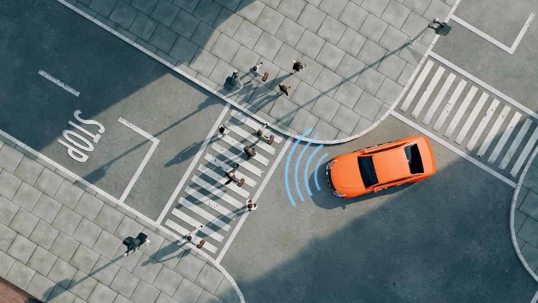Smart Tech, Real Risks: What You Should Know About Accidents Involving Autonomous Cars and Robots
It’s one thing to marvel at the rise of smart cars and robots. It’s another to be involved in a crash because one of them didn’t work the way it should. As this technology becomes more common in our daily lives—from vehicles that steer themselves to robots that navigate warehouses and hospitals—it’s clear that the future is here. But it’s not flawless.
Let’s take a look at what’s really happening behind the sensors and software—and why these “smart” systems still make mistakes that can cause serious harm.
When Machines Make the Rules
What Are Smart Cars and Robots, Anyway?
Smart cars are more than just vehicles with cool dashboards. They’re designed to drive themselves—at least in part—using tools like cameras, radar, and artificial intelligence. Some of the common features include adaptive cruise control, emergency braking, and lane-keeping. These vehicles process enormous amounts of data to make real-time driving decisions—without your input.
Robots, on the other hand, aren’t just science fair projects. They’re working in hospitals, hotels, factories—you name it. These machines can deliver meals, assist in surgery, or take on repetitive manufacturing tasks. The idea is to boost precision and reduce human error. But in some cases, they introduce entirely new risks.
The Brains Behind the Bots
What makes these systems “smart” is their ability to see and react to the world around them. That’s where sensors like LIDAR, radar, and cameras come in. They scan the environment, track movement, and feed that information into machine learning software that tells the car (or robot) what to do.
But no matter how advanced the tech gets, it’s still dependent on how well it’s built, trained, and tested. That’s where the cracks start to show.
The Technology Isn’t Always as Smart as You Think
What Goes Wrong—And Why It Matters
Sensors fail. Software glitches. Weather, shadows, or simple programming errors can lead to dangerous mistakes. A smart car might not recognize a pedestrian in low light. A factory robot might misjudge a human worker’s movement. These issues aren’t just rare bugs—they’re known limitations that engineers are still trying to solve.
There’s also the issue of speed. Tech companies race to be first to market, sometimes skipping over proper testing. That means you could be sharing the road—or your workplace—with systems that weren’t truly ready for the real world.
The Human Element Is Still a Wild Card
Even with all this automation, people still play a major role. And that can be risky. Drivers might zone out because they assume the car’s got it covered. Workers may not fully understand how to interact with a robot safely. Miscommunication between man and machine is a top reason accidents happen.
And even if a system can take over in an emergency, many of them aren’t designed to always do so. That puts the pressure back on people to react quickly—often without much warning.
Environment Plays a Bigger Role Than You’d Think
Fog, snow, unclear road signs—these things might throw you off, and they confuse robots too. Many systems struggle in unpredictable environments. A construction zone might leave a smart car guessing. A cluttered hospital hallway could cause a service robot to freeze or malfunction.
Even factors like pedestrian behavior or faulty infrastructure (like missing lane lines) can contribute to accidents, especially when the system isn’t built to adapt on the fly.
When Things Go Wrong: Real-World Accidents
Smart Car Collisions That Made Headlines
Several well-known accidents involving autonomous vehicles have already raised red flags. From cars misidentifying road hazards to failing to respond to unexpected movement, these cases often come down to a mix of tech limitations and human over-trust.
Manufacturers are quick to announce fixes or updates, but the legal fallout can get messy. Questions about who’s responsible—driver, manufacturer, software developer—don’t always have easy answers.
Robot Accidents in the Workplace
Robots in industrial settings have caused serious injuries when something goes wrong. These aren’t just mechanical failures. Sometimes safety protocols are missing, or the human operator wasn’t trained to respond in time. That’s why more industries are pushing for routine safety audits and smarter designs that can detect humans and avoid harmful interactions.
The Public Doesn’t Forget
When an accident involves smart tech, it tends to make headlines. And that affects more than just stock prices. It shapes public perception—and often leads to new regulations. After all, when the public sees machines making life-or-death decisions, they want to know someone is accountable.
That’s why companies are investing more in transparency and user education. But if you’ve been hurt, what matters most is making sure your rights are protected.
What’s Being Done to Prevent These Accidents?
Smarter Systems, Safer Designs
The good news? Safety tech is improving. Better sensors, smarter algorithms, and real-time diagnostics are making today’s systems more aware of their surroundings—and more capable of avoiding danger.
From lane departure warnings to adaptive cruise control that can respond faster than a human, manufacturers are rolling out features that aim to fill in the gaps where people or machines might fall short.
In industrial settings, robots are being designed to “see” humans more clearly and shut down immediately if something seems off. These upgrades matter—but they’re not a guarantee.
Injured in an Accident Involving a Smart Car or Robot?
If you’ve been involved in an accident—whether on the road or at work—because a smart system didn’t perform the way it should, you may have legal options.
Our team understands the complexities of these cases. We can help investigate whether the technology malfunctioned, whether safety standards were met, and who may be held accountable.
Call (254) 938-6885 today for a free consultation. We’re here to help you move forward—because when technology fails, you shouldn’t have to pay the price.

